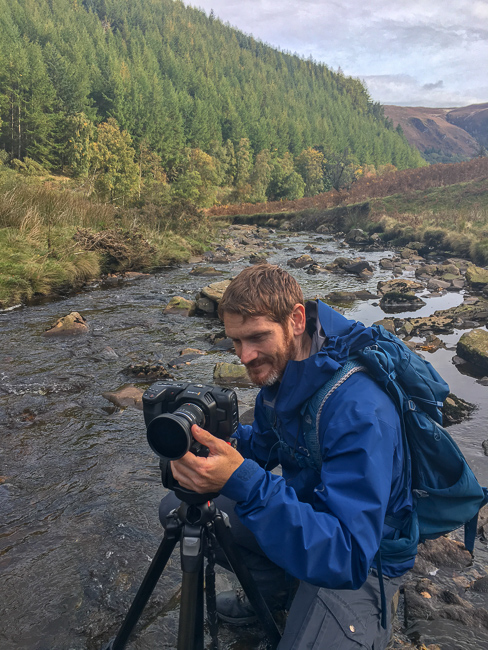
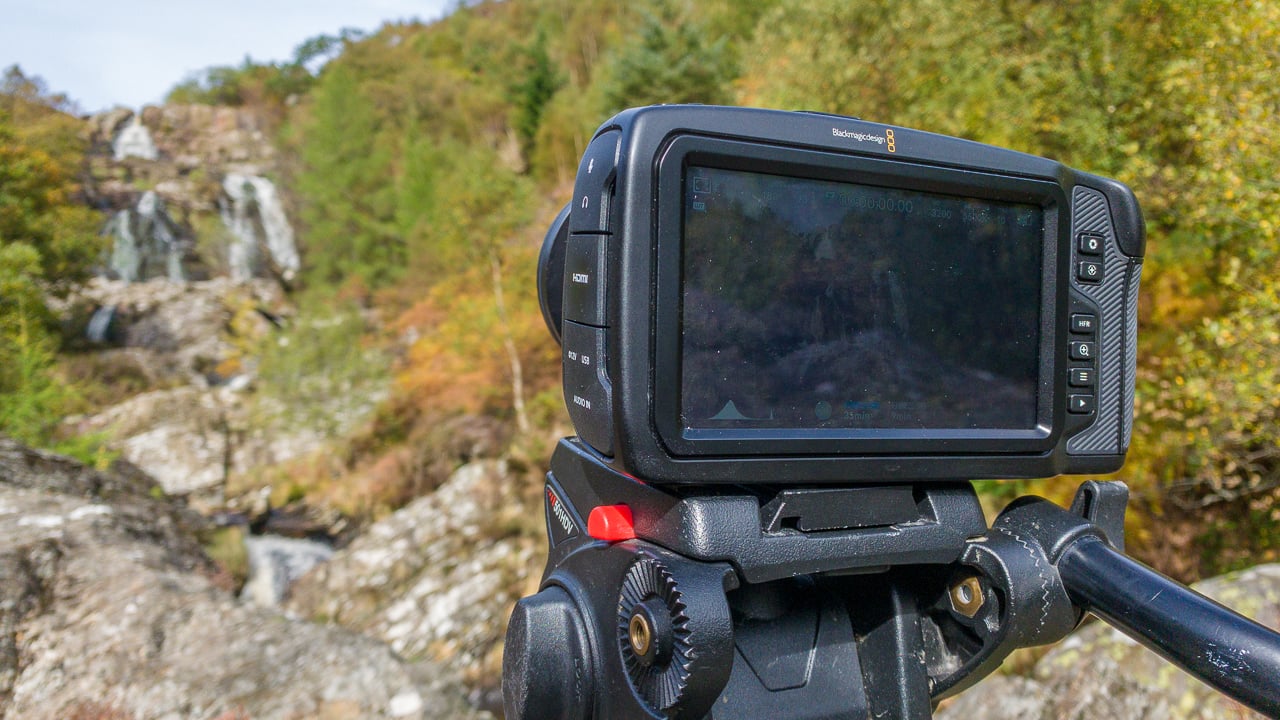
The final instalment of our comprehensive Blackmagic Pocket Cinema Camera 4K concludes with a look at what it is like to use in the field, grading, and the all important picture quality.
If you missed them, read part 1 and part 2 of this review.
In the first part of this review of the BMPCC4K I made mention of the fact that whilst it looks very much like a DSLR or large mirrorless camera such as the GH5S, it was in fact an entirely different animal. The first version of the BMPCC was not the most practical of systems, neccesitating as it did an external power solution as well as additional monitoring. Ironically although it was a much smaller camera than this new 4K iteration, by the time it was rigged for practical use it ended up almost as big as some more traditional cameras!
With this in mind I wanted to take a look at the BMPCC4K as it was intended to see whether it is usable in the way it is marketed. That is to say a very lightweight, portable 'cinema' camera that you can take with you anywhere.
The beauty of portability
With the types of adventure activities I am involved in, I am quite often in need of a high quality camera that I can hike up a mountain with, or to put into the back of a white water kayak. The latter is particularly weight sensitive with even an extra kilo here and there making a huge difference to the handling of the boat.
To have a camera that produces a truly cinema worth picture in 4K raw that is lightweight enough to carry in such places is a bit of a holy grail.
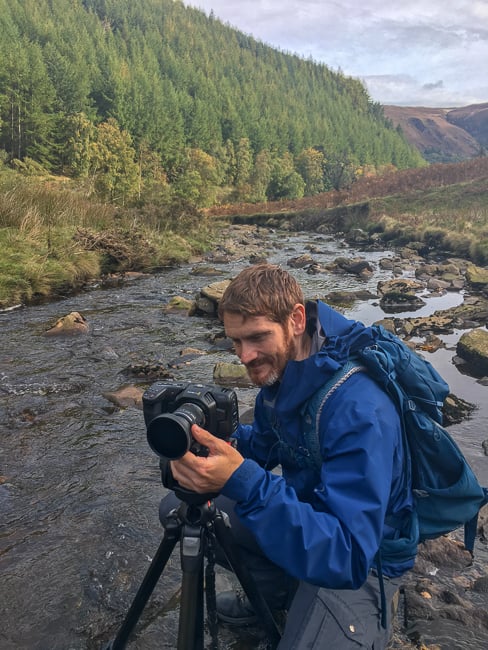
Portability and lightness is one of the major selling points of the BMPCC4K
Battery life (voltages?)
One of the most asked about questions regarding the BMPCC4K is about battery life. The original camera was, of course, terrible in this regard, where if you managed to get 20 minutes out of it you'd count yourself very lucky indeed. The new camera has a claimed battery life of between 50 mins to an hour.
In general I was getting around 50 mins or so max. I was always careful to switch the camera off when I wasn't actually needing to frame shots to extend the life of the battery. But because you can get this sort of time with a good battery, and because LP-E6 batteries are so small and lightweight, it is very easy to carry a load of them around with you. They don't cost much either.
I did notice one small discrepancy, which afflicted the original camera, too. Occasionally the camera would power down due to a flat battery even though the battery indicator was only halfway. Now, some of the batteries I have been using are old, this is important to consider, and this camera will draw a lot of power, so any deficiencies will show up quite quickly. However I did notice that the BMD official batteries are 7.4v 2000mAh 14.8Wh vs 7.2v 1800mAh 13Wh of Canon branded cells, so I wonder if there is some difference in the way that the 7.2v batteries handle vs the 7.4v versions in terms of how the camera calculates the remaining time and draws power.
This is just a small thing, but something to be mindful of and perhaps something that might be improved in a future software update. But I would advise that you have newer batteries in good condition of the 7.4v variety to get the best out of the camera rather than relying on donkey's old cells!
One other thing I would like to note, and it's a small thing, but very useful, is that the battery door opens when on a tripod to be able to swap batteries. Like I said, a small thing, but one that helps prevent faff in a fast moving situation.
Framing the shots
The speed that a lightweight camera affords you is fantastic, especially with a very lightweight lens attached, and the fast power up time allows framing to get underway very quickly and efficiently. The rear screen on the BMPCC4K is not tiltable, but it is big, and it is very bright. I didn't have any difficulty viewing it even outdoors in sunlight. The single position did make low angle shots more awkward, but this is easily solvable by manning up and simply going down with the camera. You can't call yourself a proper outdoors type if you are afraid of getting a little bit of dirt on your trousers.
The realtime histogram is very responsive, clear, and accurate, and comes in hugely useful when it comes to nailing exposure, and the quick toggling of the monitoring LUT on and off allows you to double check how things look quickly and easily.
If you are using any of the DNG raw modes something to consider when it comes to exposure and using the dual native ISO functionality is that it could effect your grading choices later. Raw shooting is generally and traditonally ISO neutral. In other words although you are setting the camera to whatever ISO you wish to use in metadata, once you get to the edit suite you can push or pull down the ISO to whatever suits you because the raw recording is not actually physically affected by the camera ISO setting.
With the BMPCC4K things are slightly different. If you record at, say ISO400, import the raw footage to Resolve, and then decide to push the ISO to 800 in the camera raw tab, you can do this easily. However if you wanted to push to ISO1250 you will not be able to do this because that ISO actually falls on the second dual gain circuit. Instead you can push it to ISO1000 maximum. Likewise if you shot at ISO3200 you cannot tell Resolve to treat it as ISO400 material because that would fall on the lower dual gain circuit.
It isn't something that will come up often, but in some scenarios it could be something to be mindful of if you are looking to be flexible later, particularly when it comes to lower light shooting with lots of specular highlights or illuminations where shadow detail is essential as well.
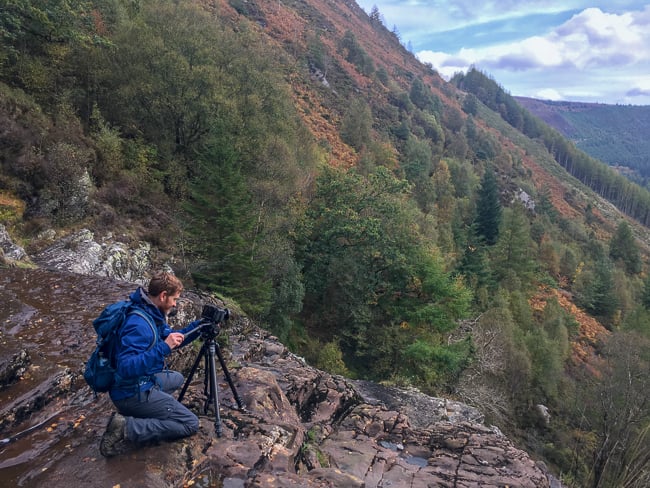
Light weight and compactness means easier accessibility to locations like this
Stills
Stills capability is another function for the camera that geta asked about a lot. Make no mistake, the P4K is a video camera through and through. It is not a hybrid video/stills device. The stills functionality of it is not meant as a replacement for your DSLR or mirrorless camera. It is designed for situations where you may need to grab a quick isolated shot, such as for set or location reference. It's a good way to grab an on set frame that can be sent away for test grading perhaps, or maybe as an in camera publicity still, or for emergencies when you have no other camera with you.
It's a single button, so there's no configration for half press auto focussing for instance, or continuous shooting. Press it once or hold it down and you only get one photo, which is saved to a seperate "Stills" folder on the card for easy finding. Effectively you are getting a 4K uncompressed DNG raw video still, since the resolution of the still frame is the same as the video.
And that's all very good as far as I'm concerned, because one of the sheer beauties of this camera is how well focussed it is on video. Just as a stills photographer gets frustrated at the video functions cluttering up their cameras, so it would be a shame to clutter up the BMPCC4K with in-depth stills functionality.
Picture quality
The P4K has some big boots to fill. The all important question is, how does the picture measure up? I'm going to summarise what I think in a few single phrases. Highly detailed. Low noise. Great dynamic range. Lovely, accurate colour.
The picture looks different to the original camera, and that's because there's a totally different, arguably much better, colour science here. In the best situations the orignal camera could look amazing. But it wasn't without issues in some scenarios, particularly in mixed natural light. I've read a few comments elsewhere making nonsense criticisms that the Pocket 4K doesn't look filmic or cinematic. From all that I have seen I disagree with such comments in the strongest possible way. For a start, nobody anywhere can truly quantify what 'cinematic' is anyway. But in the main, whether something is cinematic or not is due to the way you light, film and compose, not the camera. We have to get over this tired and dogmatic idea that everything has to be compared to physical 35mm film, especially in a world where only 20% of features are even shot on 35mm now anyway.
The colour on the Pocket 4K is astoundingly accurate, and yet it isn't cold and emotionless like other cameras I have encountered. Skin tones in particular are beautifully rendered. If you even care the slightest amount for how skin tones appear on your camera you will not dismiss the Pocket 4K, you will embrace it. Fine detail is picked up upon with none of the aliasing or moiré issues that plagued the first camera.
In the example video below you will see examples of raw footage with the Extended Video LUT applied. Generally if you want to use Extended Video as a way to shoot WYSIWYG you may need to make slightly different exposure choices. In the video below I have applied the LUT to the raw footage with no changes in most cases (bar a couple), which could do with the exposure being brought down a touch for richer colour. What I'm trying to say here is that Extended Video really does give a lovely look when exposed right, and if I don't have time to do a complex grading I would use that recording mode on the camera each and every time.
In the low light bridge sequence there was, naturally a big difference between shooting raw on the first gain circuit and trying to increase exposure, and shooting on the second one. Shadow detail was much improved, along with the requisite reduction in noise. Just one aside with that shot. At the time I did not have a fast lens, so with better glass you will achieve at least a stop better low light performance than in this example, and maybe up to 2-3 stops with some of the lenses available now.
Rolling shutter, too was well controlled. As you can see it is a huge improvement on the original camera. It can never be eliminated when the read out is done this way, but from what I can tell so far the P4K is now one of the better performers on the market when it comes to this phenomenon.
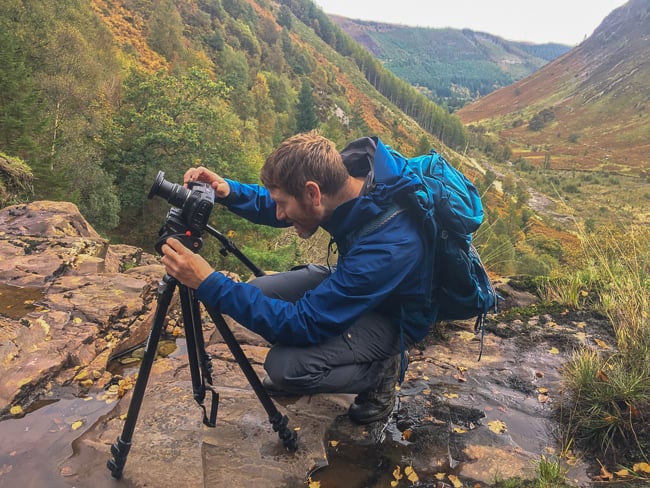
No cages needed.
Conclusions
The BMPCC4K weighs around 721 gramms without a lens, and so it is very easy to carry around. Clearly if you put a heavier lens onto it that weight advantage is lost, but if you keep to MFT glass you will have a very light system indeed. But this brings up another question. On paper one of the P4K's close rivals is actually lighter when it comes to the body weight. In that case why not go for that instead.
It's a question of seeing the bigger picture of what you have here. The rival camera requires either a seperate XLR audio module or audio recorder, which of course adds weight. Immediately then you have more bulk when the P4K already has that functionality built in to the body already. Not only that but the preamps on the P4K are much better, too, making internal audio recording that much more useful.
Then there's the controls. The video focussed nature of the P4K makes it very intuitive and easy to find you way around. I've mentioned it a few times before, but I'll mention it again. The lack of stills functionality means less clutter, and means that features such as the improved audio are possible without compromising other features.
Then there's the biggie. 12-bit DNG raw, uncompressed, 3:1 or 4:1. And that's without taking into account the very distinct possibility that new software will give the camera BRAW recording as well, making 12-bit raw just as easy storage and editing wise as ProRes. There is no hybrid stills/video camera available anywhere else that gives you this quality of recording. What's more, the USB-C recording connectivity opens up a whole lot of possibilities when it comes to remote positioning with NAS attached to it.
A lot of people will no doubt outfit a cage and external power systems. For bigger projects this is fine, and the quality of picture on offer here is more than good enough for indie feature films. Personally, for portability, apart from perhaps a simple handle affixed to the top mounting hole, for the first time in ages I can't see a need for an expensive, bulky cage. I want to keep it as light as possible, and while I know some productions may well need to fix up additional monitors and accessories to it, it is a relief to know that unlike the original camera I can pretty much use the P4K practically as it comes out of the box.
I have no hesitation in recommending the BMPCC4K. The only question is how long you might have to wait in the queue to get hold of one!
Example shots
Additional 120fps slow motion shots
Tags: Production


Comments